Decades before the race to build a self-driving vehicle became a multibillion-dollar contest between tech giants such as Tesla Inc and Google, a South Korean professor built an autonomous vehicle and test-drove it across the country — only for his research to be consigned to the scrapheap.
Han Min-hong, now 79, successfully tested his self-driving car on the roads of Seoul in 1993 — a decade before Tesla was even founded.
Two years later, it drove 300km from the capital to the southern port of Busan, on the most heavily traveled expressway in South Korea.
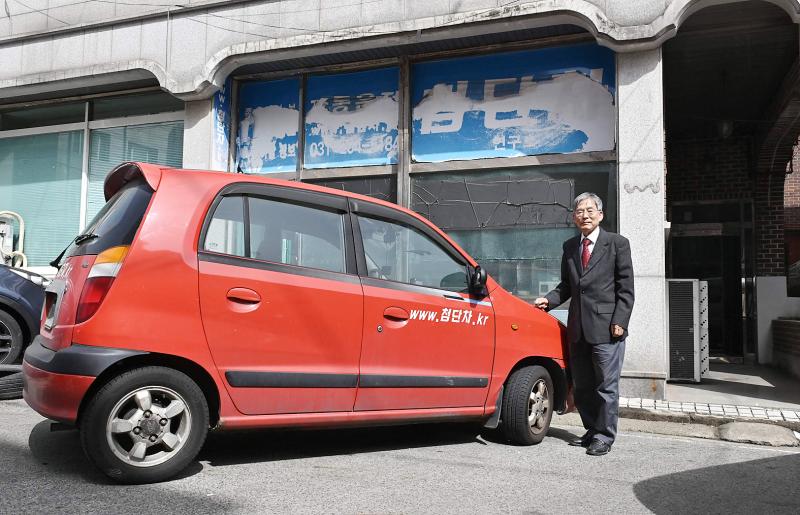
Photo: AFP
Footage from the period shows the car barreling down a highway with no one behind the wheel. A 386-chip-powered desktop computer, complete with monitor and keyboard, is placed on the passenger seat. Han is sitting in the back, waving at the camera.
“It felt extraordinary,” the affable inventor said. “The workload was very heavy,” but he and his team “had an enormous passion as it was something others hadn’t done yet, something that hadn’t come out in the world yet.”
At the time, South Korea was more focused on heavy industry, such as steel and shipbuilding, with the average South Korean not yet familiar with cellphones.
The country was yet to become the tech powerhouse it is today, and was still pursuing imitation rather than innovation.
On one occasion, Han was told: “Why develop a new technology when you can always pay for it?”
Han’s projects were seen as dangerous. He was once asked how much he was paying for his life insurance, he said, and whether his wife was aware of “these crazy activities of yours.”
However, Han was so convinced of his cars’ safety that he rarely wore a seat belt — and has never had life insurance.
Even so, unable to see much investment potential, the government eventually cut funding to his research at Korea University.
Now, Elon Musk’s electric-vehicle firm Tesla is a US$600 billion behemoth, while Han’s Chumdancha is a small company in Yongin, south of Seoul, where he and one other employee develop specialist warning systems for autonomous vehicles.
Musk is a “tremendous and outstanding” person, Han said. “He came up with his own, firm vision based on what others were doing, and that is really incredible.”
However, Han’s invention could have paved the way for South Korea to dominate the industry, he added regretfully.
Raj Rajkumar, an engineering professor at Carnegie Mellon University’s Robotics Institute, who reviewed the 1990s footage for Agence France-Presse, said that it “appears to be on par with some of the best work on autonomous vehicles during that period.”
“The professor and a colleague are not even in the driver’s seat — very bold, confident, but very risky thing to do,” he added. “It is unfortunate that funding for that project was cut. In hindsight, that was certainly not a wise decision.”
Korea University described Han as “a pioneer and hero in the global field of artificial intelligence,” who is known for developing South Korea’s first automotive navigation system and a mini-helicopter seen as a precursor to modern-day drones, as well as his autonomous vehicle work.
He is seen in the country as a genius ahead of his time — the 1990s footage has been viewed more than 1.5 million times since it was posted to YouTube in February.
Self-driving vehicles are a major technological battleground for today’s automakers, with technology giants like Google parent Alphabet Inc spending billions of dollars in a market that is supposed to fuel vehicle sales.
Tesla last year said it was “very close” to achieving Level 5 autonomous driving technology — which indicates essentially total autonomy.
However, Han said the US firm’s current offerings are effectively comparable to his 1990s work.
“As Tesla is regarded as the best car in the world, if there is a chance, I would like to compare our technology to theirs,” he said.
He suggested a challenge on the Bugak Skyway, a twisting, narrow road that runs over a mountain in northern Seoul.
“Of course, Tesla’s invested a lot of money in testing, so it might be much better when it comes to sophistication,” he told reporters. “But there shouldn’t be much difference when it comes down to basic functionality.”
Even so, Han said there are limits to what self-driving technology can achieve, and that true autonomy is beyond reach.
Neural networks do not have the flexibility of humans when faced with a novel situation that is not in their programming, he said, predicting that self-driving vehicles would largely be used to transport goods rather than people.
“Computers and humans are not the same,” he added.
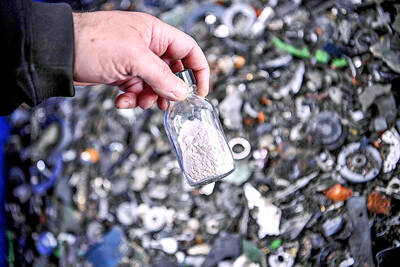
RECYCLE: Taiwan would aid manufacturers in refining rare earths from discarded appliances, which would fit the nation’s circular economy goals, minister Kung said Taiwan would work with the US and Japan on a proposed cooperation initiative in response to Beijing’s newly announced rare earth export curbs, Minister of Economic Affairs Kung Ming-hsin (龔明鑫) said yesterday. China last week announced new restrictions requiring companies to obtain export licenses if their products contain more than 0.1 percent of Chinese-origin rare earths by value. US Secretary of the Treasury Scott Bessent on Wednesday responded by saying that Beijing was “unreliable” in its rare earths exports, adding that the US would “neither be commanded, nor controlled” by China, several media outlets reported. Japanese Minister of Finance Katsunobu Kato yesterday also
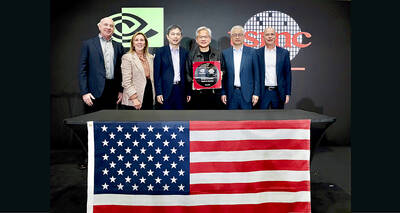
Jensen Huang (黃仁勳), founder and CEO of US-based artificial intelligence chip designer Nvidia Corp and Taiwan Semiconductor Manufacturing Co (TSMC, 台積電) on Friday celebrated the first Nvidia Blackwell wafer produced on US soil. Huang visited TSMC’s advanced wafer fab in the US state of Arizona and joined the Taiwanese chipmaker’s executives to witness the efforts to “build the infrastructure that powers the world’s AI factories, right here in America,” Nvidia said in a statement. At the event, Huang joined Y.L. Wang (王英郎), vice president of operations at TSMC, in signing their names on the Blackwell wafer to
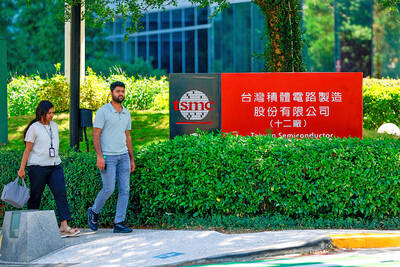
‘DRAMATIC AND POSITIVE’: AI growth would be better than it previously forecast and would stay robust even if the Chinese market became inaccessible for customers, it said Taiwan Semiconductor Manufacturing Co (TSMC, 台積電) yesterday raised its full-year revenue growth outlook after posting record profit for last quarter, despite growing market concern about an artificial intelligence (AI) bubble. The company said it expects revenue to expand about 35 percent year-on-year, driven mainly by faster-than-expected demand for leading-edge chips for AI applications. The world’s biggest contract chipmaker in July projected that revenue this year would expand about 30 percent in US dollar terms. The company also slightly hiked its capital expenditure for this year to US$40 billion to US$42 billion, compared with US$38 billion to US$42 billion it set previously. “AI demand actually
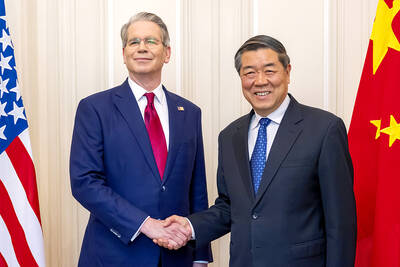
RARE EARTHS: The call between the US Treasury Secretary and his Chinese counterpart came as Washington sought to rally G7 partners in response to China’s export controls China and the US on Saturday agreed to conduct another round of trade negotiations in the coming week, as the world’s two biggest economies seek to avoid another damaging tit-for-tat tariff battle. Beijing last week announced sweeping controls on the critical rare earths industry, prompting US President Donald Trump to threaten 100 percent tariffs on imports from China in retaliation. Trump had also threatened to cancel his expected meeting with Chinese President Xi Jinping (習近平) in South Korea later this month on the sidelines of the APEC summit. In the latest indication of efforts to resolve their dispute, Chinese state media reported that